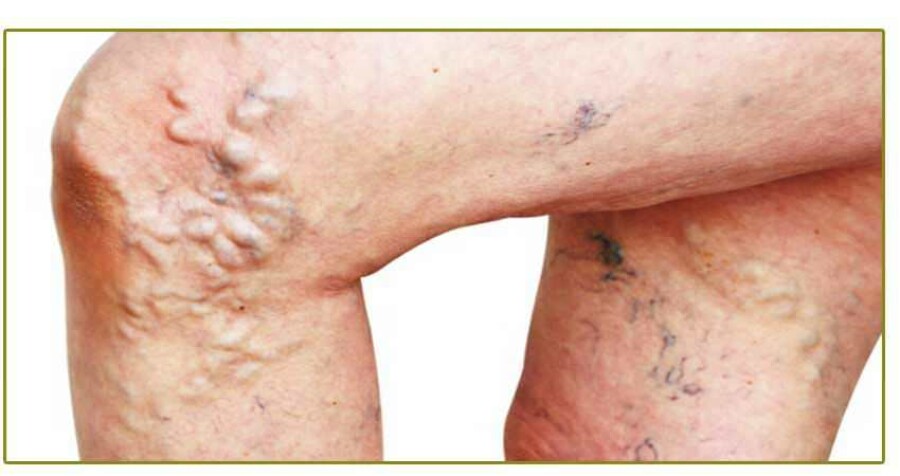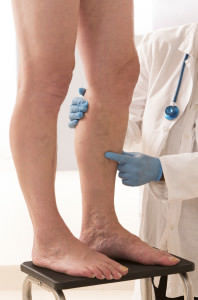Evolution and Varicose Veins: Why Humans Get Varicose Veins

By Robert C. Kiser, DO, MSPH

Varicose veins occur when veins become distensible, leading to valve dysfunction and venous insufficiency. In the previous Venous Review newsletter we learned that it is primarily humans who suffer from varicose veins of the lower extremities. This article looks at why varicose veins and venous insufficiency occur and persist in humans from an evolutionary perspective.
The field of Darwinian Medicine or Evolutionary Medicine was pioneered by University of Michigan psychiatrist Randolph Nesse and Stony Brook University biologist George C. Williams. In Dr. Nesse's words:
"All biological traits need two kinds of explanation, both proximate and evolutionary. The proximate explanation for a disease describes what is wrong in the bodily mechanism of individuals affected by it. An evolutionary explanation is completely different. Instead of explaining why people are different, it explains why we are all the same in ways that leave us vulnerable to disease. Why do we all have wisdom teeth, an appendix, and cells that can divide out of control? "
Varicose veins occur because of both inherited and environmental factors. A specific gene has not yet been definitively identified as causing the predisposition to varicose veins, although the FOXC2 gene on 16q24 has shown evidence of linkage in one study. The evidence that varicose veins are inherited comes from studies showing that varicosities occur more commonly in those whose parents have varicose veins.
Ultimately, the cause of venous insufficiency and varicose veins is gravity. More proximately, the largest contributing factor is our upright posture. The first primate to have been bipedal is believed, at the time of this writing, to be Oreopithecus bambolii, a southern Italian ape whose feet and pelvic structure suggests an upright, bipedal gait. O. bambolii lived approximately 9 million years ago. It is believed that hominids developed a bipedal gait around 4.2-3.9 million years ago Bipedalism allows for many important evolutionary benefits, such as the ability to run and walk effectively and, in animals with hands, the ability to free the hands for other activities during ambulation. However, with an upright posture come certain disadvantages as well, such as the tendency to develop back pain, falling down, and the need to develop hemodynamic mechanisms to overcome the change in how gravitational forces interact with the previously quadrupedal physiology. On the arterial side this requires blood pressure be maintained to the head. In the venous system this requires that venous valves and vein walls maintain their structural integrity against the downward pressure of blood.
Why Varicose Veins Persist in the Human Genotype
Assuming that varicose veins have some probability of leading to end-stage signs and symptoms such as venous ulcers and varicose hemorrhage, shouldn't natural selection tend to favor those whose genotype does not contain a tendency to cause venous insufficiency? There are several possible reasons why this has not occurred. First, varicose veins generally have their onset after reproductive age and rarely reach an end stage of venous ulcer or spontaneous varicose hemorrhage before reproduction. Therefore, the phenotypic expression of the underlying genetic predisposition does not occur until an age after which reproduction is common; there is little or no selection pressure to reduce the frequency of the genes predisposing to a varicose phenotype. An example of an analogous would be Huntington's chorea, in which the debilitating and eventually fatal condition most commonly occurs between 35-44 and therefore after the common age for reproduction. Furthermore, the child of a person affected by Huntington's has a 50% risk of inheriting the disease. An understanding of the genetics of the disease allows for genetic counseling and genetic testing. This creates a selection pressure against replication of this gene via the mechanism of knowledge and understanding of risks. People who undergo genetic testing understand that they have a chance to pass on the deadly gene. This allows them to choose not to have biological children, to abort an affected fetus, or otherwise avoid passing the gene.
More speculatively, varicose veins occur frequently in women after childbirth. Their frequency increases as the number of child births increase. Varicose veins in women, therefore may act as a marker of fertility, demonstrating that a woman bearing them is fertile and capable of conception and surviving childbirth. Varicosities could therefore have at some time been a sexual selection factor that positively increases its presence in the gene pool.
It is also possible that the tendency to varicose veins is associated with other characteristics which have selective advantages at least in some circumstances. For instance, varicose veins are noted to be associated with lighter skin tones, which may have some selective advantage in extreme Northern climates (due to increased vitamin D production at lower light levels). So the tendency to develop varicose veins may aggregate with other genes that have are favored due to natural selection or sexual selection.
Conclusion
As Dr. Nesse tells us, we clinicians can benefit from having a more global view of disease – both the proximate and evolutionary causes. Understanding that humans as a species are on some level predisposed to developing venous insufficiency can help physicians reshape their thinking when it comes to prevention, diagnosis, treatment, and ultimately compassion for their patients and the difficulties this condition can bring.